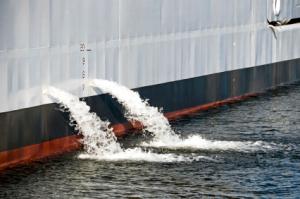Ballast Water Management – Which System to Use?
When ballast water from ships is discharged without first being treated, a number of viruses, plants, animals and bacteria gain entry into a new ecosystem. Very often, these organisms act as parasites and cause severe harm to aquatic life. The ill effects of ballast water pollution are not limited to the environment alone; they also pose a significant threat to public health and affect a host of other sectors such as water supply, fishing and even tourism.
The U.S. government spends billions of dollars every year on undoing the damages caused by the introduction of foreign elements into indigenous ecosystems. Zebra mussels, which are native to the Caspian and Black Seas, gained entry into Lake St. Claire in 1988 through the ballast water of a transatlantic cargo ship. These mussels spread to all of the 5 great lakes by 1998 and it has been reported that their introduction cost the government about 5 billion dollars. Even today, the costs of protecting local species of flora and fauna from pest mollusks alone amount to 6 billion dollars per year.
The most unwanted bacteria in ballast water are the Vibrio Cholerae – this species has already taken more than 10,000 in Peru in 1991 when it arrived there through ballast water. Other highly undesirable organisms include toxic algae, mitten crabs, North Pacific Sea stars etc. The best way to prevent ballast water pollution is through water treatment systems. When such systems did not exist, ships had to release and refill ballast water at short intervals. However, even this method is not 100% effective and it affects the productivity of the vessel. Most of the ballast water management systems that are used today are based on obsolete technology – they are expensive, inefficient and cannot withstand the pressure of modern shipping practices. Moreover, quite a few of these systems are not approved by the United States Coast Guard. According to the new regulations laid down by the U.S. Government, all vessels which sail in US waters will be required to switch over to USCG approved ballast water treatment systems by 2016. New and smaller ships have a much tighter deadline and are required to utilize modern systems from as early as December 2013. Ships owners and operators who violate the new rules will be charged under Federal Law. If convicted, the guilty party may have to pay fines that range up to $ 35000 for a single day.
Echo Energy Group supports all endeavors that are geared towards environmental conservation. They have developed a ballast water management system that is highly advanced and cost effective. Their system has been approved by the USCG and it employs cutting edge, patented technology. The inner ceramic membrane of the treatment container prevents the issue of clogging as particles do not adhere to ceramic. The auto-flush mechanism ensures that the system cleans itself. The system has a lifespan of more than 20 years and needs to be serviced only once after every six months. The treatment container can even be mounted on the ship itself provided that the vessel is big enough. The container has been designed to sway with the ship and thus it does not interfere with the dynamics. All components of the modular design have shock proof frames – this enables them to withstand harsh weather, rough handling and even earthquakes that measure up to 6 on the richer scale. The entire system is managed with the help of iPads and computers which can be controlled remotely from any location on the earth. All the above mentioned features greatly improve the efficiency of the system and consequently help to reduce costs by a significant margin.
Echo Energy Group has an unimpeachable reputation for fastest delivery and excellent customer service. You can read more about them or contact them for more information at http://echoenergygroup.net/


